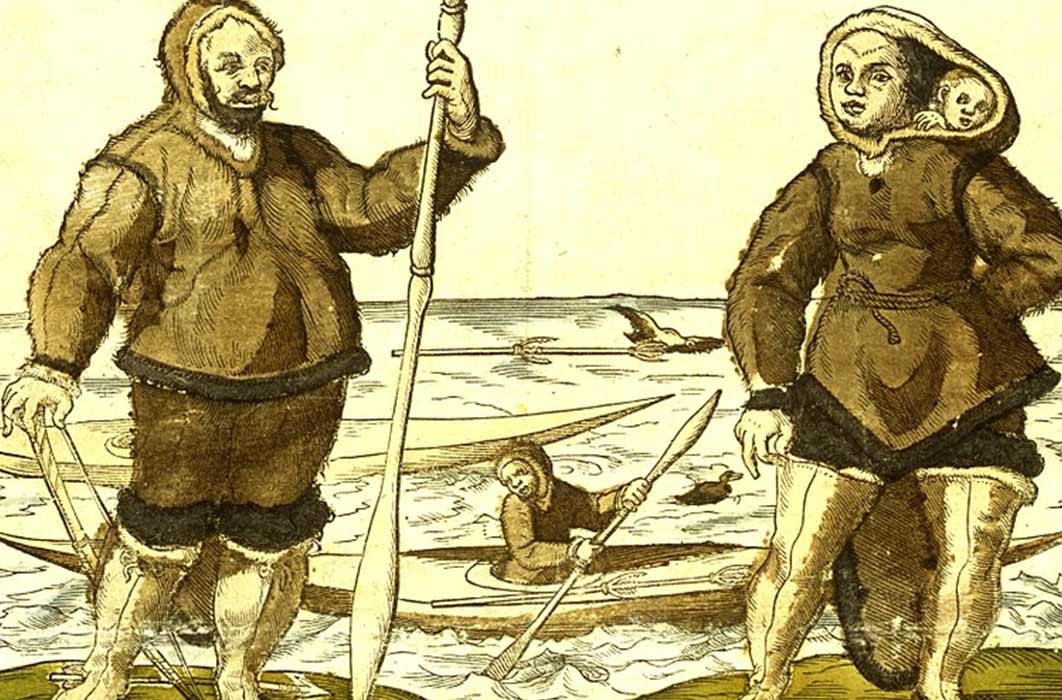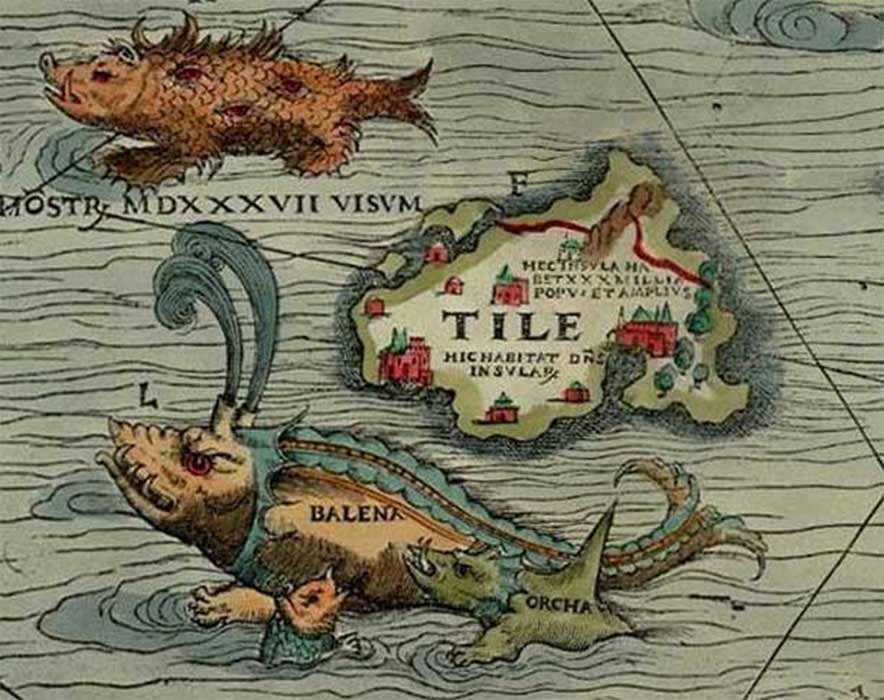
The Thule Culture: Medieval Mariners Migrating In Search Of Meteoritic Iron
The modern English word, ‘Thule’, first appeared in ancient Greek and Roman cartographic documents as the Latin word Thūlē, describing farthest north location in the known world. Over the centuries historians and archaeologists have variably concluded that word represented northern Scotland, Orkney or Shetland, but according to some researchers even the island of Saaremaa (Ösel) in Estonia and the Norwegian island of Smøla have been suggested.

Thule, as “Tile” on Olaus Magnus´ 1539 AD Carta Marina of 1539, located to the northwest of the Orkney islands with the words "monster, seen in 1537”, a whale, or balena and an orca. (Public Domain).
Researchers Nieves Herrero and Sharon R. Roseman in their 2015 book The Tourism Imaginary and Pilgrimages to the Edges of the World write that in Classical and Medieval literature the term Ultima Thule (Latin: farthermost Thule) acquired a metaphorical meaning of any distant place located beyond the borders of the known world.
The meaning of the original Greco-Roman word Thule had evolved by the Late Middle Ages and early modern period when it was used to identify Iceland, and Ultima Thule generally referred to Greenland. By the late 19th century Thule most commonly identified Norway. In 1910, the explorer Knud Rasmussen, the so-called father of Eskimology, became the first European to cross the Northwest Passage with a dogsled and he named the missionary and trading post he established in north-western Greenland, Thule. It was later changed to Qaanaaq.
- Ancient routes of the Inuit mapped for the first time
- Inuit folklore kept alive story of missing Franklin expedition to north-west passage
- Unravelling the Spellbinding Story of the Inuksuit – Mysterious Structures from the Prehistoric Arctic
In modern history German occultists believed that the historical Thule, (Hyperborea) was the land from which the Aryan race originated, and the Thule Society was associated with the Deutsche Arbeiter Partei (DAP), known later as the Nationalsozialistische Deutsche Arbeiterpartei (NSDAP or Nazi party).
Thule North Sea Migrating Mariners
While for some the word Thule may bring imagery of Nazi atrocities, to other it inspires images of ancient Greek explorers navigating the North Sea, exemplifying the ancient Thule or Northern Maritime culture. These prehistoric hunter-fishers emerged around 200 BC and lasted to around 1700 AD in the Bering Strait and along the Arctic coast in northern Alaska. Between the 10th and 12th centuries the culture had spread eastward to Greenland (Kalaallit Nunaat) and then, from approximately 1300 to 1700 AD the Thule people migrated into the central areas of Arctic Canada.

Maps showing the different cultures in Greenland, Labrador, Newfoundland and the Canadian arctic islands in the years 900 AD, 1100 AD, 1300 AD and 1500 AD. The green color shows the Dorset Culture, blue the Thule Culture, red Norse Culture, yellow Innu and orange Beothuk. (CC BY-SA 3.0)
The Thule people adapted to the harsh Arctic environment by hunting large sea mammals in open water with drag floats attached to harpoon lines. They built large skin boats and used dogs to pull large sleds, and both of these skills accelerated rapid migration and transportation of the Thule culture eastward. As a result of their eastward migration they replaced the Paleo-Eskimo Dorset culture and interacted with the Vikings of Norway.




